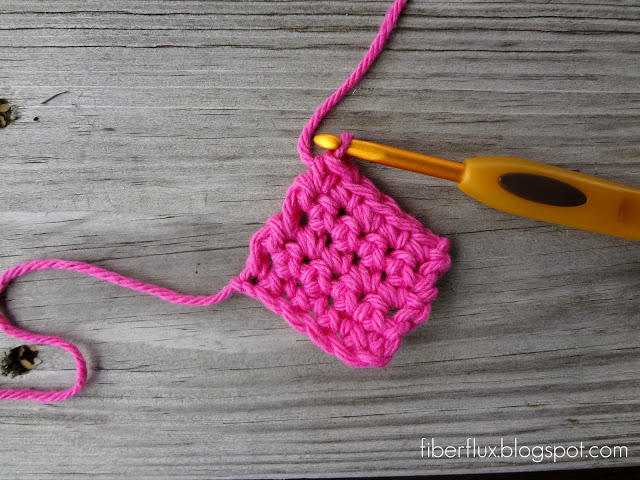
Are you new to the art of crochet? If so, you’ve come to the right place! Today we have 20 crochet tips for new crocheters to help you start getting the hang of it. If you’re not brand new to crocheting, stick around anyway. It’s always a good idea to see if there are any ways to improve your craft.
20 Crochet Tips for New Crocheters
1.Know your yarns. What’s a skein, and how many and in what weight or type do you need? If you aren’t familiar with all the types of yarn that are out there, take a trip to your local yarn or hobby store and check them out. Weight, type, color and softness all matter, depending on the project you decide to tackle.
2. Familiarize yourself with crochet hooks. They come in lettered sizes. Most projects will require a hook somewhere between size H and size L. A multi-pack like this one will serve you well. Size N is another good size to have around for projects that require a bulky yarn.
3. There are some basic stitches that form the foundation for any crochet project. These include the slip knot, chain stitch and single crochet stitch. At Make and Takes, there are some excellent step-by-step videos to help you master these and other crochet stitches.
4. What if you find a pattern you like, but you prefer other colors of yarn? This tutorial helps you pick colors that will be complimentary to each other.
Everyday Items That Make Crochet Easier!
5. Use an empty toilet paper tube or even a pill bottle to make a center pull ball of yarn, without having to pay for an expensive ball winder.
6. A plastic container in an 8 quart size will hold 5 or 6 skeins of yarn for the same project. Holes in the lid keep it all organized and tangle-free!
7. If you travel frequently and take your projects with you, this is a genius tip. All you need is a large plastic drink cup with a domed lid. Feed the yarn through the hole in the top of the lid, and now you can easily work on your project in the car or plane without the yarn rolling off your lap.
8. Cheap yarns are stiff, but when you want to save money on a project try this method to soften the yarn once you have finished your project. All you need is shampoo and conditioner, it works great!
9. The Granny Square is a good skill to have in your arsenal, because you can do many projects with this basic square. Here is a great tutorial to learn how to crochet a Granny Square.
More Crochet Tips
10. When you get to the end of a project, do you know how to weave in the ends to finish it off properly? Fiber Flux blog shows you how to accomplish this in several ways. My favorite way is to weave it through the bottom row of stitches using a tapestry needle.
11. A beginning crocheter should definitely learn how to crochet in the round, and this excellent tutorial will help you conquer it.
12. Once you master the basics of the slip knot, chain stitch, and single crochet, one of the next stitches to master is the half double crochet. Click the link for a great tutorial that shows you how!
13. Before you make a blanket, learn the front post double crochet. It is a stitch that gives texture to a project, so it’s definitely one you will want to learn.
14. Looking for a great tutorial to help you master the slip stitch crochet? Check out Fiber Flux.
15. Once you have mastered all the basic crochet stitches, put them all to work in a stitch that will make you look and feel like a pro. It’s the Catherine Wheel stitch, and it uses the basic stitches you’ve learned. It makes little pinwheels throughout your work and it looks amazing!
Visual Learner? Find Online Crochet Videos
16. Feeling a little lost with the world of crochet? Try an online crochet class. There’s even a class for lefties!
17. Use mini clothes pins on the first few rows of a project to keep the ends from curling and give you a more accurate look at how your ends are shaping up.

18. Pencil grips are a great thing to put on your crochet hook to make it more comfortable to hold for long periods of time.
19. To avoid hand cramping when crocheting for long periods of time, try these hand exercises for crocheters. Hand pain is a risk when doing any repetitive motion crafts, but this will help minimize it.
Crochet Happy!
20. Finally, know that there are scientifically proven health benefits of knitting and crocheting! So don’t give up—stay with it for a more relaxed, happier you!
Before you go, check out these easy crochet patterns! Let me know which of these crochet tips is your favorite!


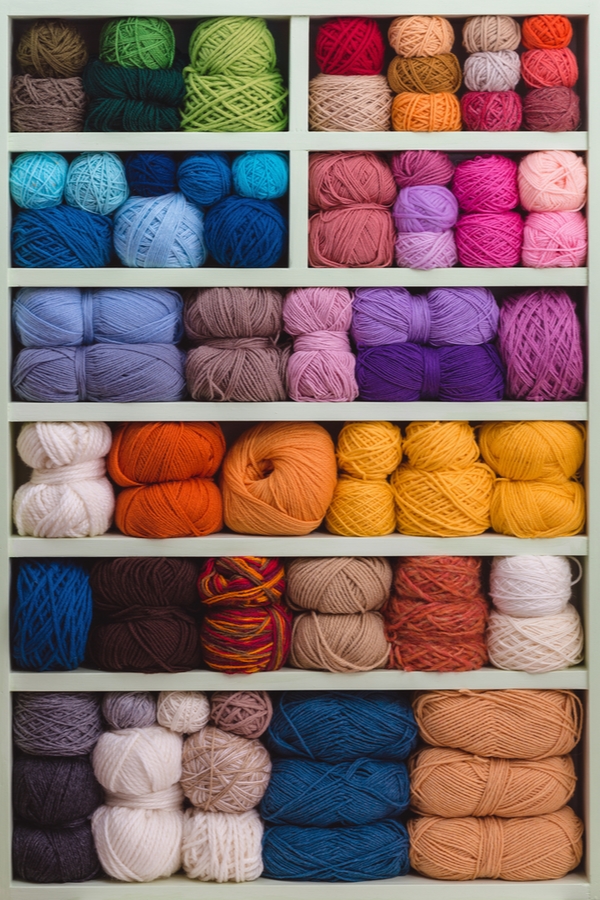
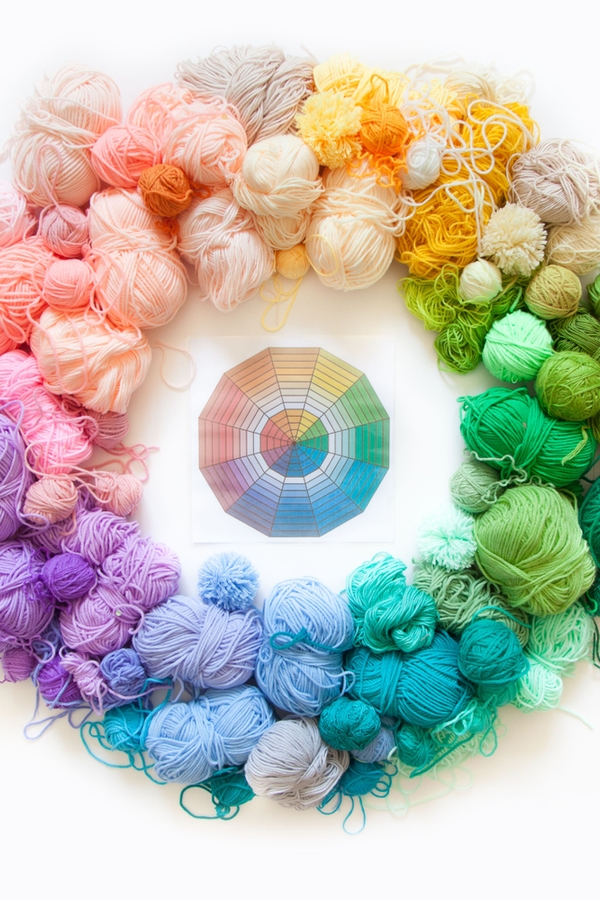
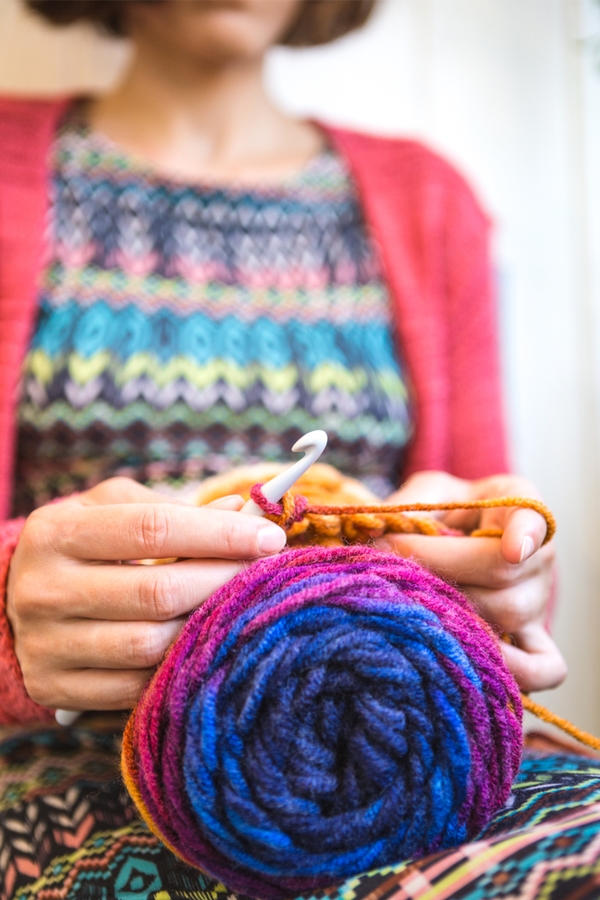

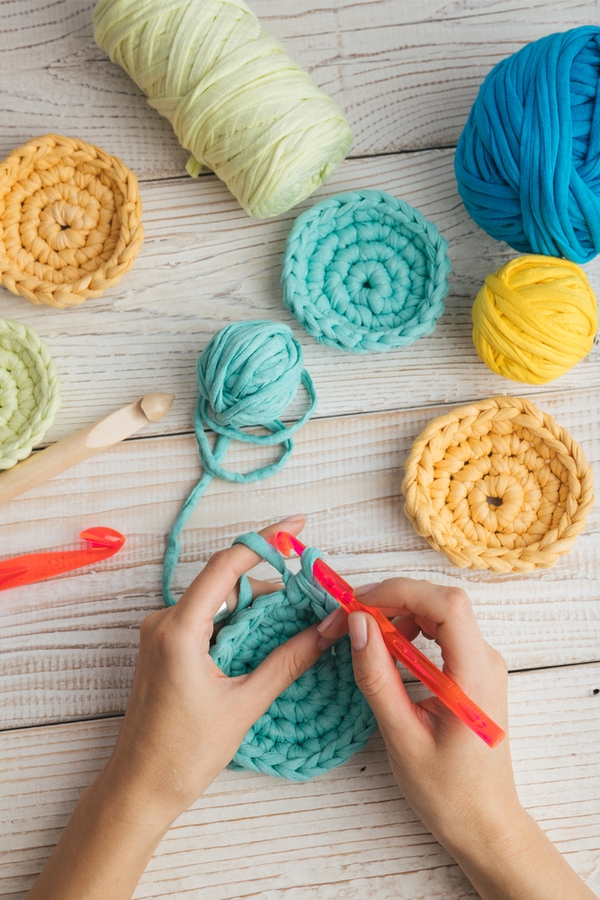
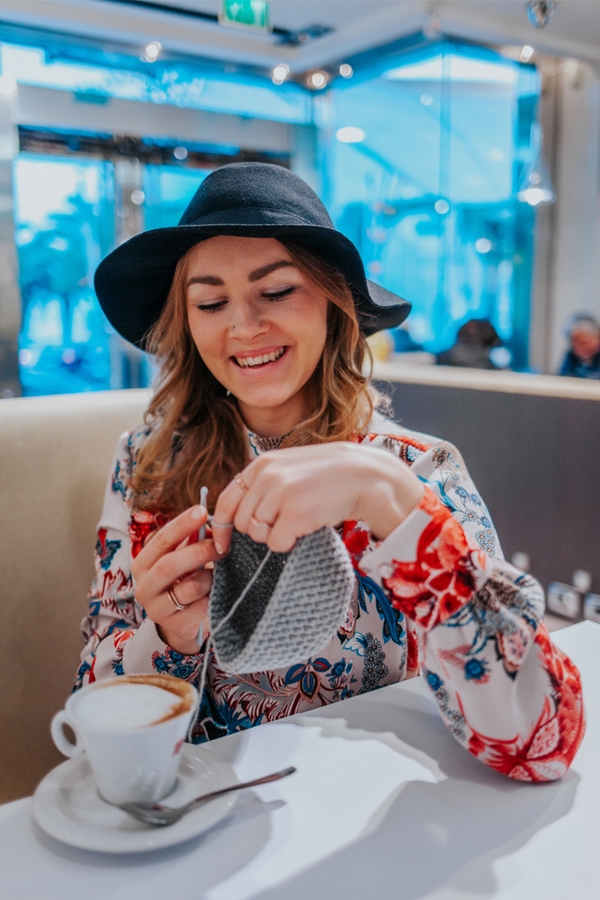
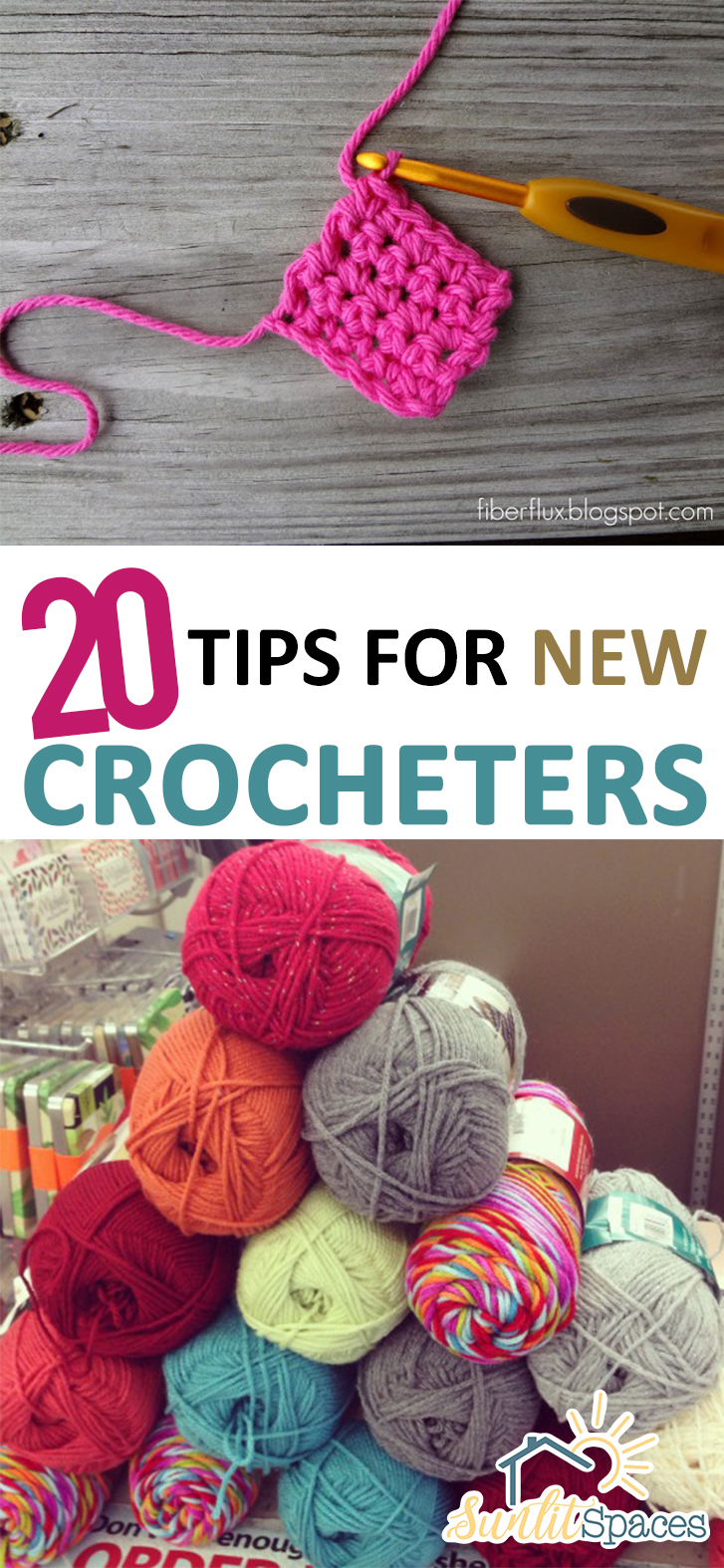
I really enjoyed this site and learned a lot.Thanks.I’ll have to save this as a guide
1992 Auntie Annies mile a minute is excellent for someone just learning. She has you doing five different stiches.
You have some great tips also.
A really helpful list for a beginner
Thank u for all the help!! Love this!
This is an OK list, but I’d edit the hook information. A size G by one manufacturer is not the same as a size G by another. It would be more accurate to discuss actual size–3.75mm, or 5.0mm for example. Additionally, there is nothing in your list that speaks to the importance of guage. Gage is probably one of the most important things a new crocheter can learn to improve his/her projects.
I have a neat little tool that has holes of varying sizes. Find the hole where your hook fits exactly and it tells you the size in letters and millimeters. It helped me find the sizes of some vintage hooks and a couple that the printed sizes had worn off. It also has knitting needle sizes and a gauge check section. Mine is a Susan Bates brand and came from Joanne Fabrics, but I bet there are other brands and dealers available.
GWEN. Do a spell check before criticism. I have been crocheting for years and this is great information especially for beginners. Thank you Sunlitspaces.com
whhat crochet hooks are true to size
Hooks C and D are true to size. Sizes E-K are actually known to be one size bigger than their marked sizing.
Great tips!
I’ve been crocheting for a lot of years, but have recently been asked to help some new crocheters learn. i learned some new things, and was reminded of some basics that I haven’t thought of for awhile that will help my learners. Thanks, for this collection of ideas!
I have been crocheting for 40 years, and some of your tips I have never heard of. Thank you so much you made my life easier. I make a lot of baby blankets and baby had some baby sweaters and baby shoes and some of the tips on exercise taking it with you in a Starbucks cup or a down lead was awesome, also using hair conditioner to soften less expensive yarn. Your tips are awesome thank you so much.
Kim,
Thank you so much for reading! I’m glad these were helpful for you!
If you use the wool from the middle instead of the outside, the ball won’t going rolling around all over the place when you pull out more wool.
What if you can not find the middle if the yarn skein without tearing up the whole skein?
I am new to knitting and now would like to crochet. The lady told me to put your fingers in the left of the label facing you and just grab a bit out. It’s in there
I am new to crocheting. I was told by my Papa, who taught me, that my grandma would cut a hole in the side of a gallon milk jug and put her ball of yarn in It, pull the end through the top.
Then your ball of yarn stays in place and won’t roll around. I have done this and it works awesome ! I have pets and that means pet hair! It keeps my yarn free of pet hair!?
Thank you for an excellent blog with your “20 Tips for New Crocheters”. I’m not new at it, but I still learned a LOT that I can use to help me crochet smarter and with less hand fatigue! You’re never too old to learn something new! Wonderrful tips!
I cannot just sit in front of the TV and watch only it, I have to be doing something, so I crochet (my mom used to hand sew quilt appliques). I just retired in July ’17, so now I am presently making afghans for my grandchildren. While I was working I had a lot of down time so I would make hot pads, coasters, doilies, or granny squares for future afghans – I mean a LOT – so I will selling those this summer at our local farmers market.
Where can I find those 20 tips. ‘?
Crochet and Knitting…the best hobbies I’ve ever had.
My mother taught me Crochet and Sewing.
Knitting books taught me the basics and the rest of the stitches and patterns I got from the Internet. Generous fellow knitters offered tips and suggestions.
Thank you all.